Intel Developer Forum 2007 - Day 2: Menlow and Intel's iPhone Mockup
by Anand Lal Shimpi & Howard Johnston on September 19, 2007 1:39 PM EST- Posted in
- Trade Shows
Menlow and Silverthorne
Menlow is the "platform" (read: chipset + CPU), Silverthorne is the CPU, and the development on all of this started about three years ago. The goal was simple: reduce power, compared to Centrino, by 10x in order to make it into ultra small, ultra portable devices. Once the design had been finalized, it was clear that this chip could not only be used in UMPCs but also in things like consumer electronics devices and embedded systems.
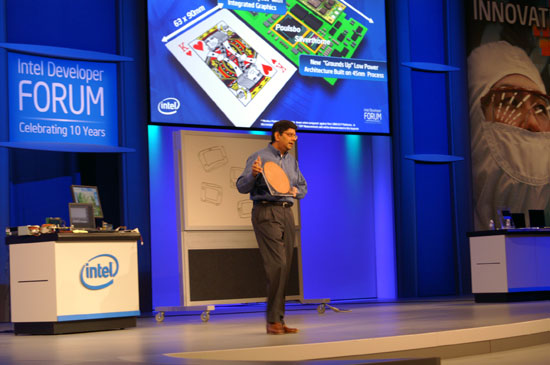
Silverthorne Wafer
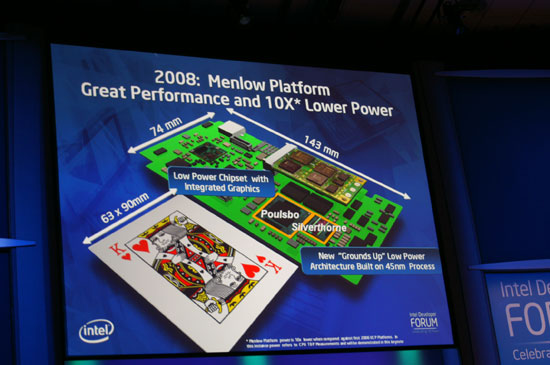
Menlow is still very much a conventional PC platform, the motherboard itself is quite small but it doesn't feature the level of integration AMD has with its Xileon family of processors for example (Intel's answer to that is on the next page).
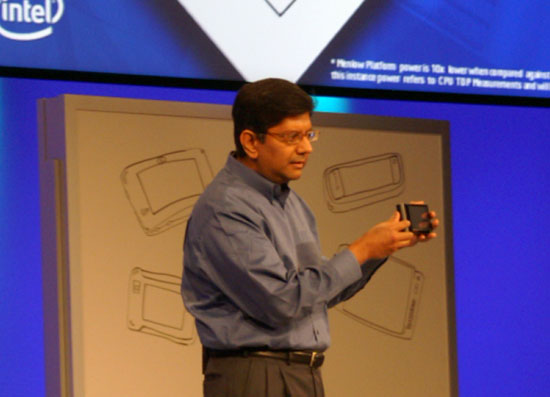
Menlow in Action
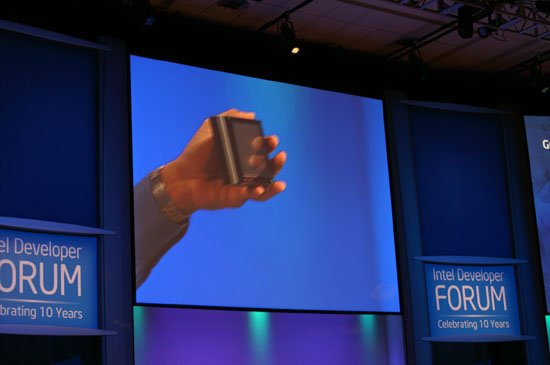
Menlow in Action, Take 2
The first version of Menlow, due to its size and power characteristics, is thus best suited for ultra-mobile PCs or extremely portable notebooks.
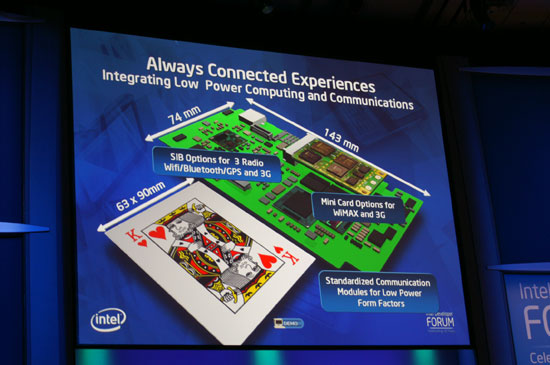
Intel demonstrated the significant power advantage of Silverthorne vs. Dothan, the current Pentium-M used in most UMPCs today with a quick power demo.
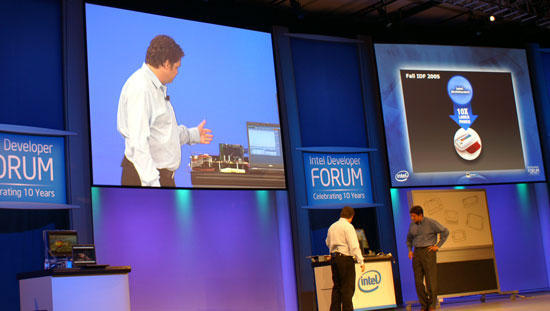
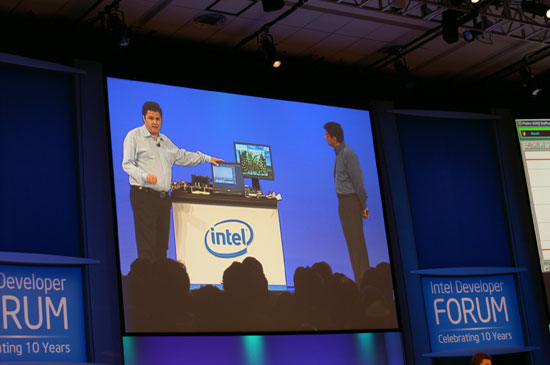
Doing nothing, the Silverthorne system consumed less than 0.55W indicated by the graph below. The two red lines represent two power targets, 5.5W (TDP for ULV Dothan), and 0.55W (target for Silverthorne). The green line at the bottom is actual power consumption of Silverthorne; the processor is mostly idle, but when it peaks Intel is running a power virus designed to run the chip at 100% CPU utilization.
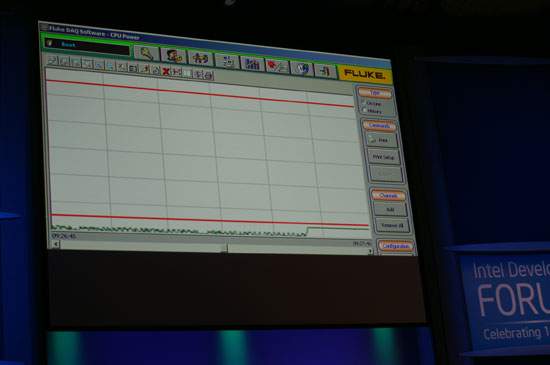

Power consumption of ULV Dothan in blue, Silverthorne in Green, the systems were simply running a flash animation.










6 Comments
View All Comments
Sunrise089 - Thursday, September 20, 2007 - link
So I guess Anand is referring to himself in the third person now?Martimus - Thursday, September 20, 2007 - link
It is always nice to hear about what is coming up. Thanks for keeping us up to date, these are some interesting articles.psychobriggsy - Wednesday, September 19, 2007 - link
Apple's perfectly happy with using ARM SoCs that are here now, are very low power consuming, and allow them to sell a product now (and for the past 6 years). A product with an incredibly tiny motherboard.It's not like ARM is standing still either when it comes to CPU power, and the Intel side of things will be sacrificing CPU power to get down to that level of power consumption. The vast number of ARM based SoCs will always mean that Apple can select the best option for their devices as well, and I don't see x86 challenging ARM anytime soon - all the systems that run on ARM now, well, clearly have an ARM toolchain set up. It might stop some products migrating to ARM from x86 however.
Doormat - Wednesday, September 19, 2007 - link
The integrated video encode/decode is a nice touch - being able to decode H264 is great, but being able to encode it on the fly means you have a portable video camera/video phone in your pocket. And streaming H264 over a 3G network is fesiable.amdsupport - Wednesday, September 19, 2007 - link
that split touchscreen keyboard seems to solve a major gripe people have with the iphone. It looks like they might create another gripe though if it were to be that long...just doesn't seem pocket worthy.arung - Monday, October 4, 2010 - link
place for <a href="http://kiranatama.com/services/iphone-development&... app development</a>, <a href="http://kiranatama.com/services/ipad-development&qu... app</a> and <a href="http://kiranatama.com/services/blackberry-developm... app</a>